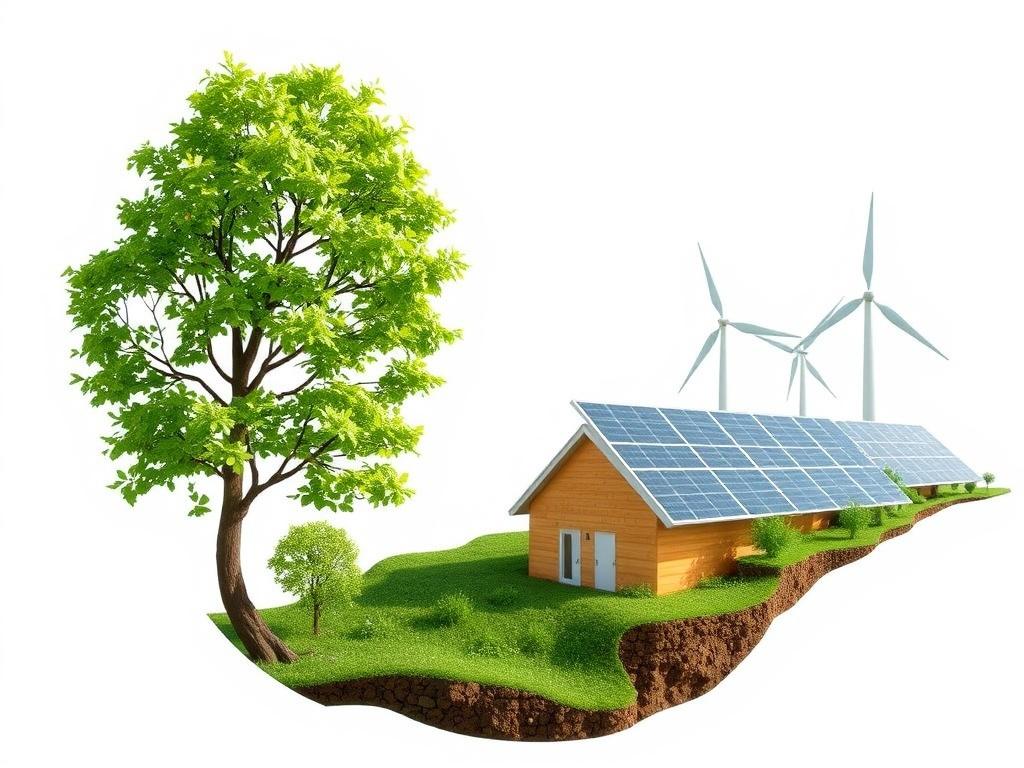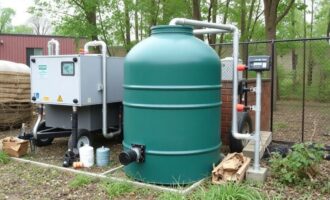- Understanding the Economic Costs of Renewable Energy Transition
- Capital Investment vs. Operational Costs
- The Hidden Costs: Grid Modernization and Energy Storage
- Environmental Costs and Trade-Offs in the Renewable Energy Transition
- Material Extraction and Environmental Impact
- Land Use and Wildlife Considerations
- Social and Economic Impacts: Communities in Transition
- Job Creation vs. Job Displacement
- Equity and Energy Access
- Technological and Infrastructure Challenges
- Grid Stability and Management
- Scaling Up Storage Technologies
- Financing and Policy Frameworks to Support the Transition
- Key Policy Instruments
- Financing Models
- Table: Summary of Renewable Energy Transition Costs and Challenges
- Looking Ahead: Balancing Costs and Benefits
- Key Strategies for Managing Costs
- Conclusion
As the world races toward a greener future, the transition to renewable energy sources is often celebrated as the ultimate solution to climate change and energy security. But beneath the inspiring headlines and ambitious promises lies a complex web of costs and considerations that deserve a closer look. The true cost of renewable energy transition goes far beyond price tags on solar panels or wind turbines—it encompasses economic, environmental, social, and technological factors that shape the feasibility and impact of this global shift.
In this article, we will explore the multifaceted costs associated with the renewable energy transition. We’ll dig deep into the financial investments required, the environmental trade-offs, the challenges posed to existing infrastructure, and the social implications for communities and industries. Along the way, we’ll use real-world examples, data tables, and easy-to-understand explanations. Our goal is to give you a balanced, in-depth understanding of what it really means to move away from fossil fuels and embrace renewables.
Understanding the Economic Costs of Renewable Energy Transition
When people talk about the cost of renewables, they often focus on installation expenses or the levelized cost of energy (LCOE). While these are important, the true economic cost involves much more. It includes upfront capital investments, ongoing maintenance, integration with existing grids, and importantly, the cost of intermittency and energy storage.
The initial capital costs for solar, wind, and other clean technologies are generally higher than fossil-fuel alternatives, but they benefit from lower operating costs over time. The declining costs of solar photovoltaic (PV) panels and wind turbines have been encouraging, but transitioning an entire energy system is a massive financial endeavor.
Capital Investment vs. Operational Costs
It helps to break down the economic costs into two main categories:
- Capital Investment: This includes the purchase and installation of renewable energy facilities, upgrades to the electric grid, and development of supporting infrastructure like transmission lines and smart grid technologies.
- Operational Costs: Expenses related to maintenance, repair, management of the energy system, and intermittency solutions like battery storage and backup generation.
For example, according to the International Renewable Energy Agency (IRENA), the global weighted average LCOE for solar PV dropped by 85% between 2010 and 2020, illustrating decreasing capital and operational costs. However, storage solutions like lithium-ion batteries still carry significant costs that must be accounted for.
The Hidden Costs: Grid Modernization and Energy Storage
Renewables such as wind and solar generate electricity unpredictably—sometimes when demand is low or not at all during calm, cloudy periods. This intermittency requires costly solutions for a reliable energy supply, including:
- Energy storage systems (batteries, pumped hydro, etc.)
- Grid infrastructure modernization for better energy management and demand response
- Backup generation capacity (often natural gas or hydroelectric plants)
These investments add to the overall cost of renewable energy transition but are necessary to maintain a stable power supply. The table below summarizes average costs for key components involved:
| Component | Average Cost (USD per kW) | Description |
|---|---|---|
| Solar PV Installation | $1,000 — $1,500 | Cost includes solar panels, mounting, inverters, and installation |
| Onshore Wind Turbine | $1,300 — $1,700 | Cost covers turbine manufacturing, transport, and construction |
| Battery Energy Storage | $400 — $700 | Cost per kWh of usable storage capacity (lithium-ion) |
| Grid Modernization | Varies widely | Includes smart meters, grid sensors, and upgrades |
Environmental Costs and Trade-Offs in the Renewable Energy Transition

While renewable energy cleaner than fossil fuels, the transition itself is not without its environmental footprint. Manufacturing solar panels, wind turbines, and batteries involves mining raw materials like lithium, cobalt, and rare earth elements, often in ecologically sensitive regions.
Moreover, the lifecycle of renewable energy technologies—from resource extraction through production to disposal—introduces environmental impacts that are frequently overlooked in mainstream discussions. For instance, large-scale solar farms and wind turbines require significant land, which can disrupt ecosystems and biodiversity.
Material Extraction and Environmental Impact
The demand for metals and minerals used in renewable technologies has soared alongside the growth of the clean energy sector. Mining activities can cause soil erosion, water contamination, and habitat destruction. Responsible sourcing practices are critical but often challenging to implement globally.
For batteries, critical raw materials include:
- Lithium
- Cobalt
- Nickel
- Manganese
Each material comes with its own set of environmental and social issues, from pollution to labor conditions. Transitioning to recycling and developing less resource-intensive technologies are ongoing solutions being explored by scientists and policymakers.
Land Use and Wildlife Considerations
Renewable energy infrastructure can also affect local habitats. Large solar farms can fragment wildlife corridors, while wind turbines have been associated with bird and bat mortality. Careful site selection, technological improvements, and environmental impact assessments are crucial to minimizing these risks.
Social and Economic Impacts: Communities in Transition
The renewable energy transition is not just a technical or financial issue; it deeply affects people’s lives and livelihoods. Workers in fossil fuel industries face job losses, while new opportunities arise in renewable sectors. Regions dependent on coal mining or oil extraction may experience economic disruption, requiring thoughtful policies and retraining programs.
Job Creation vs. Job Displacement
Renewable energy industries tend to be more labor-intensive during the installation phase but less so during operation compared to fossil fuels. This shift means a potential for both job creation and displacement within energy communities.
- Job Creation: Manufacturing, construction, installation, and maintenance of renewable energy facilities.
- Job Displacement: Decline in coal mining, oil drilling, and related support sectors.
Governments and companies must invest in education, reskilling, and new job programs to ease this transition and ensure equitable growth.
Equity and Energy Access
Another social dimension involves energy equity—ensuring that the benefits of renewables reach all segments of society. Rural and low-income communities may face barriers to adopting clean energy technologies due to costs, infrastructure, or policy gaps.
Policies that promote inclusive access, subsidies, and community-owned renewable projects can help ensure the energy transition is just and widespread.
Technological and Infrastructure Challenges
The deployment of renewables on a massive scale demands significant technological advances and infrastructural changes. Integrating millions of decentralized energy sources into an existing grid designed for centralized power stations is an immense challenge.
Smart grid technologies, demand response programs, advanced forecasting, and energy storage systems are essential components of a reliable renewable-powered grid.
Grid Stability and Management
Unlike traditional power plants, solar and wind energy are variable and uncontrollable. Maintaining voltage and frequency stability becomes more complicated. Technologies such as real-time monitoring, automated controls, and grid-forming inverters are required to manage this complexity.
Scaling Up Storage Technologies
Energy storage systems are essential to balance supply and demand. Currently, lithium-ion batteries dominate but face cost, resource, and lifespan limitations. Research into alternative storage methods like flow batteries, compressed air, and hydrogen storage is underway, but widespread implementation will take time.
Financing and Policy Frameworks to Support the Transition

Financing the renewable energy transition requires coordinated actions by governments, private investors, and international institutions. Clear policies, incentives, and stable regulatory environments are critical to mobilizing the trillions of dollars needed.
Key Policy Instruments
- Feed-in Tariffs: Offering guaranteed prices for renewable energy producers to encourage investment.
- Renewable Portfolio Standards (RPS): Mandating a minimum share of renewables in energy mixes.
- Tax Credits and Subsidies: Financial incentives to reduce upfront costs and promote technology adoption.
- Carbon Pricing: Putting a cost on carbon emissions to make fossil fuels less competitive.
Financing Models
Renewable projects often rely on a mix of public funding, private investment, and international aid. Green bonds and climate funds have emerged as innovative financing tools, helping to channel resources to clean energy infrastructure.
Table: Summary of Renewable Energy Transition Costs and Challenges
| Category | Cost/Challenge | Details |
|---|---|---|
| Economic | High Upfront Capital | Solar, wind installation, grid upgrades |
| Economic | Storage and Backup Costs | Battery systems, demand management |
| Environmental | Resource Extraction | Mining demand for lithium, cobalt, rare earths |
| Environmental | Land Use Impact | Habitat disruption and biodiversity loss |
| Social | Job Displacement | Coal, oil sector layoffs |
| Social | Energy Equity | Accessibility for underserved communities |
| Technological | Grid Integration | Stability, management of variable resources |
| Technological | Storage Technology | Cost and scalability of batteries |
Looking Ahead: Balancing Costs and Benefits
Despite the many challenges and costs, the renewable energy transition is vital for curbing greenhouse gas emissions and fostering sustainable development. The financial, environmental, and social investments needed today can pave the way for a cleaner, more resilient energy system tomorrow. Governments, industry leaders, and communities must work together to address the complex realities involved, from technology and policy to equity and environmental stewardship.
Key Strategies for Managing Costs
- Innovate and Improve Efficiency: Continued R&D to lower costs and develop alternative materials.
- Enhance Recycling and Resource Management: Create closed-loop systems for critical minerals.
- Support Workforce Transition: Provide retraining and social safety nets.
- Invest in Grid and Storage Infrastructure: Ensure reliable and flexible energy systems.
- Implement Inclusive Policies: Promote access and participation for all stakeholders.
Conclusion
The true cost of renewable energy transition extends well beyond the price of panels and turbines. It is a sweeping transformation that touches every facet of society and the environment. Understanding these costs—from economic investments and environmental trade-offs to social challenges and technological demands—is crucial for making informed decisions on how to navigate our global energy future. While the path forward is complex and costly, the benefits of a cleaner, more sustainable energy system are undeniable. By embracing innovation, fostering equitable policies, and collaborating across sectors, we can realize the full promise of renewable energy while managing its true costs effectively and responsibly.
Как вам статья?







